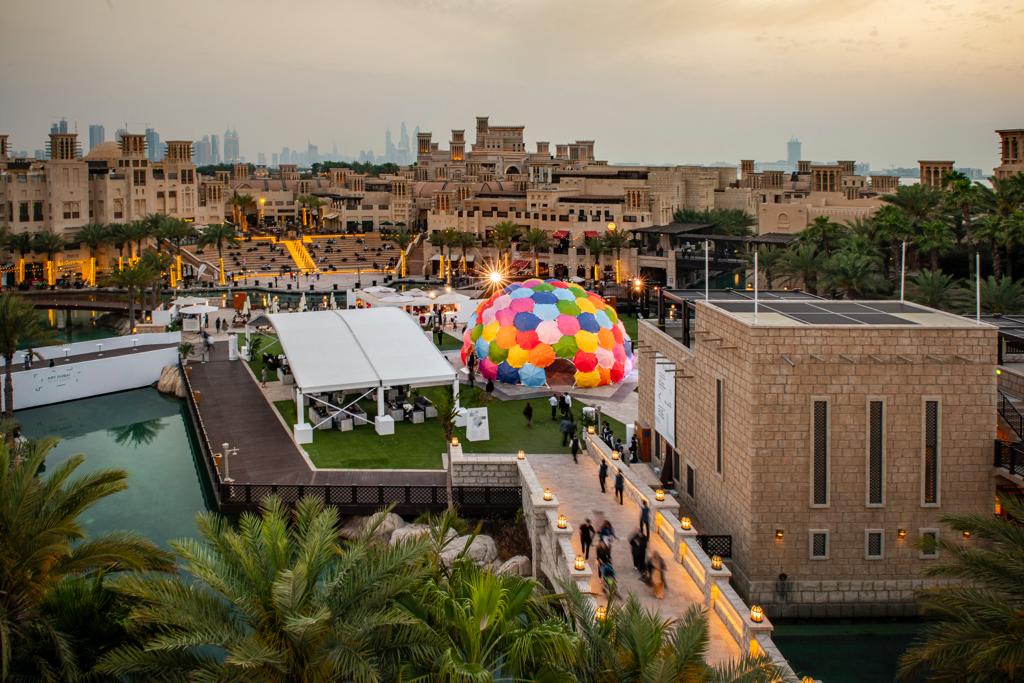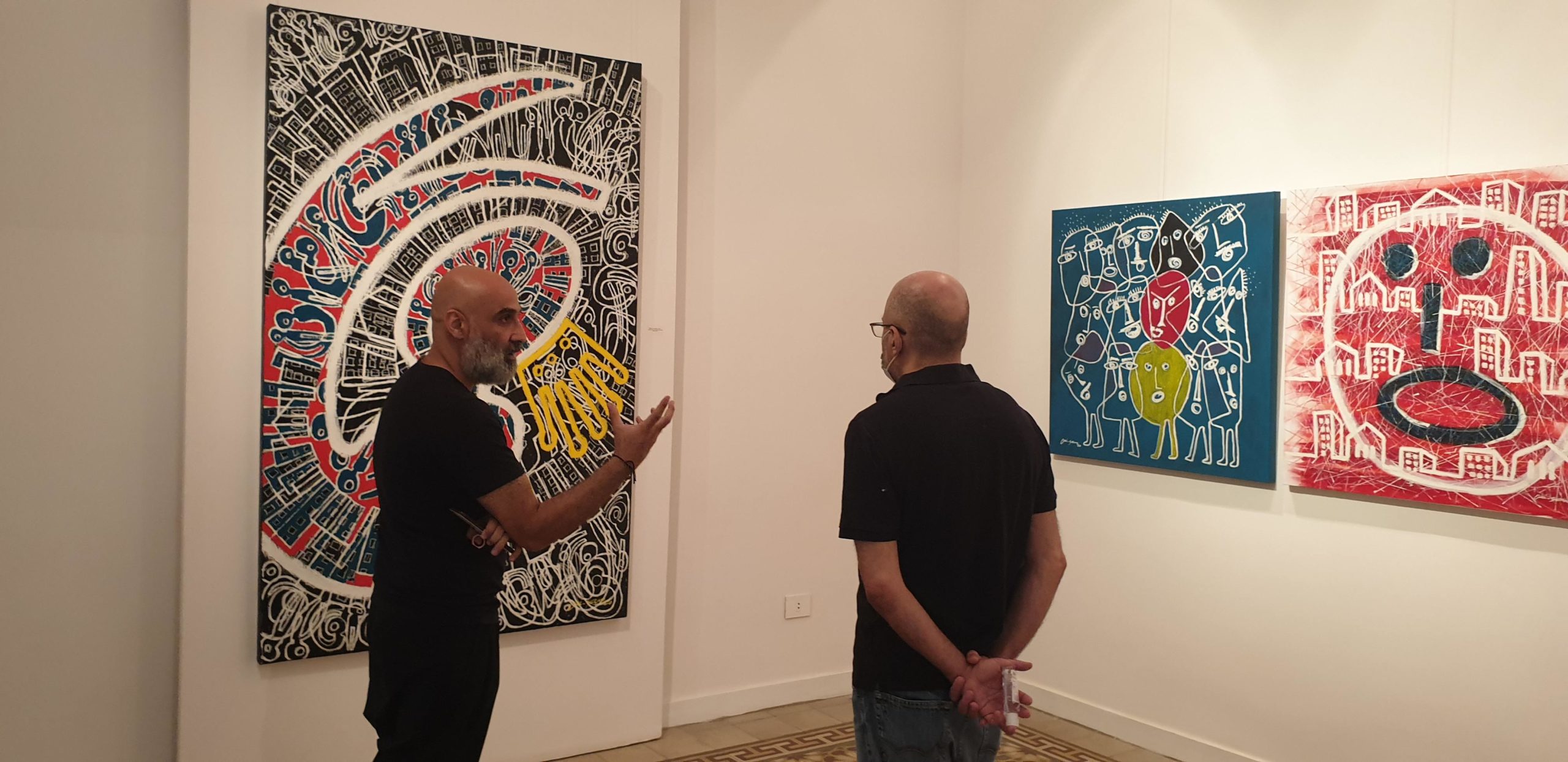As I was undertaking the exploration of the 17th İstanbul Biennial this year, I had to truly discover new layers of history and culture that the city offers. The Biennial of 2022 offers 12 different venues, all woven within the urban fabric of both the Asian and European sides of İstanbul. This article uncovers the true gems of the Biennial, and encourages the readers to visit before this city-wide art event ends on November 20, 2022.

The 17th edition of the İstanbul Biennial is curated by Ute Meta Bauer, Amar Kanwar, and David Teh, who began working on the project in 2020. The 2-months-long, city-wide event is organized by the İstanbul Foundation for Culture and Arts (IKSV). The onset of the pandemic deterred the launch of the Biennial previously, and shaped the vision of the curators for the possibilities that the Biennial could, and should, offer. In the words of the curators, the Biennial was to be “a great dispersal”; indeed, the imposition of an exhibition in the traditional sense of the word is exactly what the Biennial is not. In fact, the Biennial emerges from within the rich history and dense urban fabric of the city. The project locates local venues, some of which are not intrinsically linked to the arts, and by collaborating with them creates beacons for the local communities, and spotlights the activities within the city.
In a sense, the curators are growing, highlighting and linking the local and the global communities.
Maie El-Hage, art historian and curator
Furthermore, the choice of participants is telling; artists, designers, musicians and activists on an international scale bring awareness to different global issues. These themes and issues include: environmental concerns, climate change, activism, feminism, grassroots movements around the globe, and the politics of archiving. In a sense, the curators are growing, highlighting and linking the local and the global communities.

Some of the venues selected for the İstanbul Biennial are newly refurbished heritage buildings within the dense urban fabric of the Fatih district. These include the 16th century Çinili Hamam by architect Mimar Sinan, which was originally an Ottoman Turkish hamam. Previously damaged by earthquakes and fires over the centuries, a restoration project was inaugurated in 2010, and this heritage structure is due to reopen in 2023 as partly a hamam and partly a museum. The Biennial allows attendees to visit the building today as a rare glimpse of what is to come. Musicians were invited to fill the space with sound projects. Two sound installations, one by Italian artist Renato Leotta and the other by Australian-based artist Taloi Havini, bring light to environmental concerns and the politics of location. The former is inspired by the Mediterranean sea, and employs the work of composer Federico Bisozzi and musicians from Italy and Turkey. This sound project echoes hauntingly in the interior space, and creates the sensation of being undersea. In the corners are clear jars filled with water and leaf samples from different sites in the Mediterranean seascape. The project, titled “Concertino for the Sea”, makes a direct link between a sensorial experience recreated in a heritage building in İstanbul and the tangible reality of contemporary Mediterranean sites. In a way, the project connects and brings together two-geographically-separated environments.


Another heritage building in the Fatih district is the Küçük Mustafa Paşa Hamamı, larger in scale than the Çinili Hamam but within walking distance. This 15th century Turkish hamam is one of the oldest of its kind in İstanbul, and was previously included in the 14th İstanbul Biennial of 2015. In its larger central hall, Lebanese artist and composer Tarek Atoui fills the space with sound project installations titled “Whispering Playground” and “Waters’ Witness”. Several faucets are installed separately, dripping water into various vessels (with microphones installed), creating different rhythms. The project presents a well-studied synchronicity of sounds; the different dripping-water-rhythms are underpinned by a background soundscape. The experience of the project really struck me, and various themes came to my mind. Perhaps the choice of mediums is a reference to the scarcity of water?
Other projects at the Küçük Mustafa Paşa Hamamı include a quasi-archival installation of stories, images and artefacts by Newell Harry and Roslyn Oxley9 Gallery Sydney, video installations by Araya Rasdjarmrearnsook, and a Poetry channel and public book exhibition that allows the visitors to ‘read in public’. Overall, the experience is one of an overlapping of various intellectual debates and cultural exchanges.

A little further off at Çemberlitaş, but still in the Golden Horn of İstanbul, is where the Barın Han is situated. This building is the former studio and printing press of the infamous Turkish calligrapher Emin Barın, who also worked in book-binding. Barın was a pioneer and an instructor of calligraphy, having studied in Germany. The Barın Han building has been regularly holding exhibitions and workshops in the recent years. The exhibition is astounding; 6 floors of the building showcase artists of the Biennial. The themes are mostly political. The second floor, for example, is occupied by Açık Radyo, an İstanbul-based independent radio station founded in 1995. Their exhibition “Here and Now 2022” encapsulates an audio-visual documentation from the radio’s archive, open studio, live broadcast and performances. In their own words, “Açık Radyo has provided a unique, egalitarian and collectively run public forum open to the sounds, colours and vibrations of the universe”. Their contribution to the Biennial included broadcasts in 2021 and podcasts in English in 2022. I found this representation of active, local media platforms as part of the Biennial to be truly interesting and relevant, especially to contemporary art culture.

Other exhibitions at the Barın Han include the sculptural objects of Nakamura Yuta in his historical commentary “Atatürk’s Catafalque: Another Utopian Architecture?”, Bangladeshi-based independent institution Pathshala South Asian Media Institute (PSAMI) whose political activism highlight the plight of garment workers, and the puppetry and street performance by Dr. John Bell, a theatre historian based in Brooklyn. Also, an archival collection of books highlighting stories of feminist activism in Turkey is displayed in the first basement level. In addition to that, a public performance installation includes a laptop and a printer which invites visitors to “Dream, Write and Print” and add their own ideas by printing on the very artworks (papers) on display and re-pinning them to the walls.

Included on the first floor is an exhibition of the works of the founder himself Emin Barın (1913 – 1987); beautiful works of Islamic calligraphy with an unprecedented modern twist. On the ground level is the printing press, where visitors are invited to hand-print 2 prepared artworks with calligraphy; one to take home and one to give back to the Han. This venue really spoke to me, as it was truly remarkable to see the history of the building exhibited adjacent to contemporary art projects of different contexts.


Across the Bosphorus and on the Asian side, the Müze Gazhane participates in the Biennial for the first time. Originally a gasworks facility to produce coal and gas in the Kadıköy district of İstanbul, this project has been completely redesigned as an arts and culture centre and technology museum, having launched in just a little over a year ago. It includes on its premises a Climate Museum, site-specific sculptures, and an outdoor area for festivals and concerts. The main themes of the exhibitions installed here are: environmental issues/ climate change, environmental activism, women’s rights activism, ecology and sustainability, community-building and grassroots movements.




Back on the European side, in the district of Beyoğlu, the prestigious museum the Pera Müzesi participates in the Biennial. Three floors are dedicated to the Biennial, and two floors are showing the permanent collection of the Pera Müzesi, now open for free for Biennial visitors. The 5th floor hosts exhibitions addressing issues related to the environment, activism, territories and indigenous rights to the land, and feminism, in a series of installations, videos and photography displays. The 4th floor includes projects addressing feminism, grassroots movements, and climate change, including an exhibition titled “The Public Life of Women: A Feminist Memory Project” (Nepal). And finally, the 3rd floor showcases political and archival projects, including an exhibition exploring the archives of the Ottoman History in Lebanon by Lamia Joreige.




Beyoğlu hosts 5 other venues for the 17th İstanbul Biennial: Saha Studio, Büyükdere 35, Yaklaşım Tüneli Taksim, Merkez Rum Kız Lisesi and Performistanbul. Performistanbul is an international performance art platform based in a historic building in Beyoğlu since 2016. Merkez Rum Kız Lisesi is the Central Greek High School for Girls, originally founded to provide education for underprivileged girls, but closed in 1999 due to low enrollment. The classrooms still contain educational material from that era, and so the building is preserved and cared for by a local family. In Kadıköy, an arts centre named arthereistanbul is also included as a Biennial venue. It was started in 2014 by exiled Syrian artists, and includes a recording studio, dark room, meeting and exhibition spaces. And finally, the Zeytinburnu Medicinal Gardens (European side) is the most low-key venue of the Biennial. It is a garden that includes 700 medicinal plant species, and “stands at [the] crossroads between modern medicine and various healing traditions” (IKSV).
That is why İstanbul, to me, is a city constantly in a state of flux; always oscillating between past and future.
Maie El-Hage, art historian and curator
In conclusion, visiting the 17th İstanbul Biennial reminded me of the seasonal migration of birds; one has to literally be in constant motion to see and visit all the different venues within the urban fabric of İstanbul, both European and Asian sides. Indeed, the theme of change and distillation come to mind as one circulates around the city, uncovering layers one did not necessarily know of. That is why İstanbul, to me, is a city constantly in a state of flux; always oscillating between past and future. There is always more to know about this city’s history, even as we move forward uncertainly into the future. The efforts by the curators to bring to the fore stories and communities from around the globe, while simultaneously building up local communities and venues is truly commendable, and one not to be missed.

The 17th İstanbul Biennial closes its doors on November 20, 2022, and I encourage the readers to make a plan to visit İstanbul before it ends.
Follow IKSV İstanbul Biennial website here and on Instagram here
Follow the author Maie El-Hage’s account on Instagram here and check out her website Art Historian Maie



